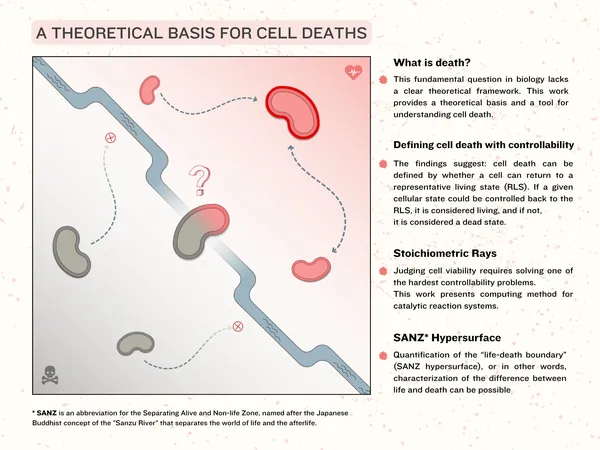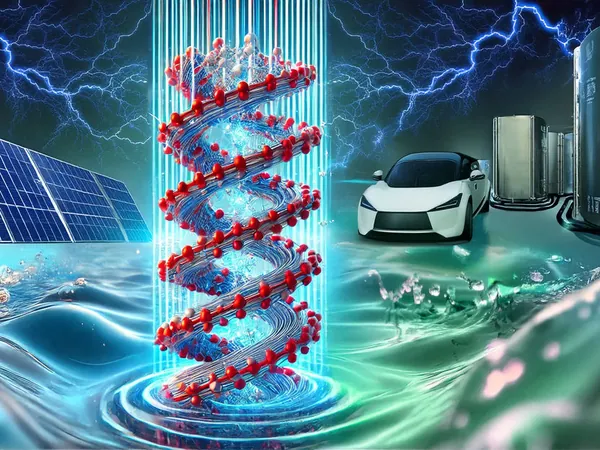
Groundbreaking Mathematical Formula Could Change Our Understanding of Cell Death
2024-11-27
Author: Wei
In a revolutionary step for biological sciences, researchers at the University of Tokyo have unveiled a novel mathematical definition of cell death, a concept that, despite its fundamental importance, has lacked clarity within scientific frameworks. This innovatively proposed definition highlights the context-dependent nature of cellular death and sets the stage for potential advancements in both biological and medical research.
Traditionally, distinguishing living cells from dead ones seems straightforward; however, the absence of a widely accepted mathematical definition has left a significant gap in scientific understanding. "Understanding cellular death is crucial not only for scientific advancement but also has far-reaching implications on health and disease," stated Assistant Professor Yusuke Himeoka from the Universal Biology Institute. His work aims to uncover the intricate differences between living and nonliving entities and challenge the commonly held belief that death is an irreversible process.
The research team focused on identifying cellular states as either alive or dead based on their ability to revert to what they describe as a "representative state of living." This is a foundational concept, suggesting that cells might not be permanently dead, but rather in states from which they can return to life under specific conditions. To achieve this, Himeoka and his colleagues leveraged the dynamics of enzymatic reactions, which are critical to cell metabolism, effectively quantifying the boundary between life and death through a computational method they termed "stoichiometric rays."
By exploring the second law of thermodynamics, which posits that systems naturally progress from ordered (living) to disordered (dead) states, the researchers have created a framework for better understanding how to potentially control or reverse cellular death. This groundbreaking work opens up possibilities for further lab experiments, raising hopes for advances in areas such as regenerative medicine and treatment for degenerative diseases.
However, Himeoka noted that while this new computational method is robust, it does not yet extend to autonomic systems—essentially the cellular machinery that operates independently, such as proteins. He envisions an expansion of this methodology to encompass these complex living systems, which could lead to an even deeper understanding of biological life.
“In essence, we often naïvely accept death as a definitive endpoint; however, this discovery challenges that paradigm,” Himeoka explained. “If we can gain more control over the processes surrounding death, it could revolutionize our comprehension of both life and societal perceptions of mortality.”
These insights not only represent a significant scientific breakthrough but also prompt profound philosophical and ethical reflections on the nature of life, death, and the boundaries between the two. As researchers continue to explore this mathematical definition of cell death, the implications of their findings could reshape the future of biological sciences and ultimately the way we approach life itself.
With this cutting-edge research making waves, one has to wonder: Are we standing on the precipice of a new era in the fight against death? Stay tuned as this story unfolds!


 Brasil (PT)
Brasil (PT)
 Canada (EN)
Canada (EN)
 Chile (ES)
Chile (ES)
 España (ES)
España (ES)
 France (FR)
France (FR)
 Hong Kong (EN)
Hong Kong (EN)
 Italia (IT)
Italia (IT)
 日本 (JA)
日本 (JA)
 Magyarország (HU)
Magyarország (HU)
 Norge (NO)
Norge (NO)
 Polska (PL)
Polska (PL)
 Schweiz (DE)
Schweiz (DE)
 Singapore (EN)
Singapore (EN)
 Sverige (SV)
Sverige (SV)
 Suomi (FI)
Suomi (FI)
 Türkiye (TR)
Türkiye (TR)